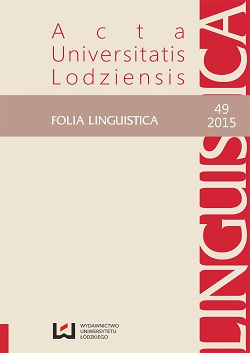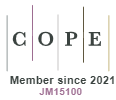Aesthetic and ethical parallelism regarding to fantasy genre convention
DOI:
https://doi.org/10.18778/0208-6077.49.08Keywords:
aesthetic and ethical parallelism, value, valuation, evaluative measures, fantasy literature, axiological linguisticsAbstract
This paper constitutes a summary of studies in the field of axiological linguistics. Its main aim is to present a relationship between the moral judgement and the aesthetic evaluation of characters in the Polish fantasy literature and to elaborate on some of their their characteristics. The study shows that most of the analysed characters were created on the basis of an aesthetic and ethical parallelism, which means that the righteousbeautiful or the evil-hideous types are realized. Yet the parallelism is by no means overt in the literature. A tremendous role in modification of the character’s profile is played by such attributes as the character’s eyes and voice. Descriptions of the character’s body frame and scars, recurring features in the character’s profile, and means of indirect valuation (mostly colour) are axiologically analysed. Also, the most pronounced trends in the use of primarily evaluative means are pointed out.
Downloads
References
Etcoff N., 2002, Przetrwają najpiękniejsi, tłum. D. Cieśla, Warszawa.
Google Scholar
Gazda G., Tynecka-Makowska S. (red.), 2006, Słownik rodzajów i gatunków literackich, hasło: Baśń, Kraków.
Google Scholar
Kolek Z., 2010, Psychofizyka barwy, „Prace Instytutu Elektrotechniki”, z. 244.
Google Scholar
Martuszewska A., 1994, Fantastyka w świetle teorii światów możliwych, w: taż (red.), Fantastyka. Fantastyczność. Fantazmaty, Gdańsk.
Google Scholar
Pawłowski B. (red.), 2009, Biologia atrakcyjności człowieka, Warszawa.
Google Scholar
DOI: https://doi.org/10.31338/uw.9788323511854
Puzynina J., 1991, Jak pracować nad językiem wartości?, „Język a Kultura”, t. 2: Zagadnienia leksykalne i aksjologiczne, J. Puzynina, J. Bartmiński (red.), Wrocław.
Google Scholar
Puzynina J., 1992, Język wartości, Warszawa.
Google Scholar
Rudolf E., 2001, Świat istot fantastycznych we współczesnej literaturze popularnej, Wałbrzych.
Google Scholar
Rzepińska M., 1983, Historia koloru w dziejach malarstwa europejskiego, Kraków.
Google Scholar
Sapkowski A., 2001, Rękopis znaleziony w smoczej jaskini. Kompendium wiedzy o literaturze fantasy, Warszawa.
Google Scholar
Skołuda C., 1960, O fantastyce w literaturze, „Ruch Literacki”, nr 3.
Google Scholar
Tokarski R., 2004, Semantyka barw we współczesnej polszczyźnie, Lublin.
Google Scholar
Trębicki G., 2007, Fantasy. Ewolucja gatunku, Kraków.
Google Scholar
Zgorzelski A., 1980, Fantastyka. Utopia. Science fiction. Ze studiów nad rozwojem gatunków, Warszawa.
Google Scholar
Sapkowski A., 2000, Chrzest ognia, Warszawa.
Google Scholar
Sapkowski A., 2006, Czas pogardy, Warszawa.
Google Scholar
Kres F.W., 2009, Grombelardzka legenda, t. I, Warszawa.
Google Scholar
Sapkowski A., 1999, Krew elfów, Warszawa.
Google Scholar
Piekara J., 2012, Necrosis. Przebudzenie, [opowiadania:] Krew, śmierć i świt, Księżniczka i wiedźma, Następny piękny dzień, Lublin.
Google Scholar
Sapkowski A., 2012, Pani Jeziora, Warszawa.
Google Scholar
Kossakowska M.L., 2004, Siewca Wiatru, Lublin.
Google Scholar
Sapkowski A., 2006, Wieża Jaskółki, Warszawa.
Google Scholar
Downloads
Published
How to Cite
Issue
Section
License

This work is licensed under a Creative Commons Attribution-NonCommercial-NoDerivatives 4.0 International License.










